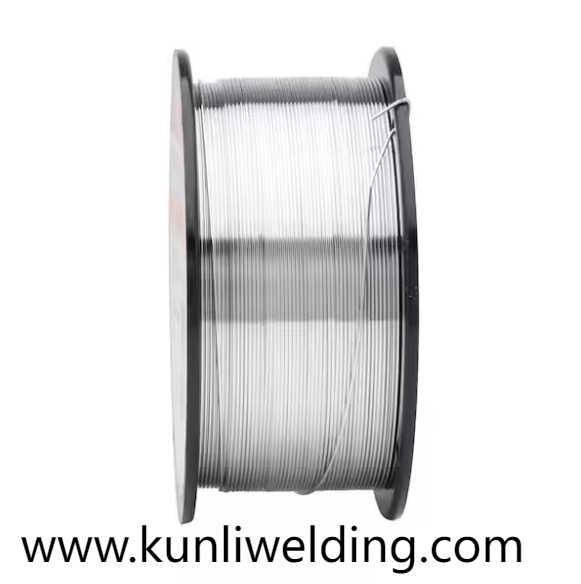In many workshops and fabrication yards Aluminum Welding Wire ER5356 is often called on for tasks where strength and environmental resistance matter. The wire's mechanical balance and weldability make it a frequent choice when teams need joints that hold up under repeated service stress while still fitting into established shop routines.
Industry trends are shaping where ER5356 shows up most. Electrification of vehicles and growth in renewable installations push designers to use lighter alloys and to demand reliable welds in thin sections. At the same time coastal renewables and repair work on marine equipment increase the need for filler metals that accept protective finishes and resist environmental attack. These shifts mean that production planners and procurement teams are looking more closely at filler selection as a way to control lifetime costs and reduce rework.
ER5356 is valued in several application areas. First, in vehicle bodies and chassis components where lower weight helps efficiency, the wire's deposition characteristics allow fabricators to maintain speed without excessive distortion. Its fill rate supports productive runs while the weld bead can be dressed and finished to meet appearance requirements. Second, in structural assemblies and frame welding where dynamic loads occur, the filler's ductility helps joints tolerate fatigue better than some alternatives. Fabricators working across mixed thicknesses find the wire forgiving under a modest range of heat inputs so long as basic sequence rules are followed.
Third, in marine and outdoor equipment ER5356 pairs well with common coatings. Welds need to accept paint and sealers uniformly to avoid crevice sites that trap moisture. When teams include the heat affected zone in their finishing overlap and keep surface prep consistent, the welded assembly becomes easier to protect and inspect. Fourth, in pressure vessel repair and HVAC assemblies the wire's tolerance for controlled travel speeds makes short patch runs predictable. Finally, in fabrication of consumer metal goods and architectural panels where visual finish matters, ER5356 supports neat bead profiles with careful torch control.
Translating material choice into consistent outcomes relies on a few practical steps. Arrival inspection matters. Check spool marking packaging condition and spool rotation before committing material to a run. A quick bench feed test with the actual feeder path and drive roll settings saves hours by revealing liner or adapter issues early.
Surface prep is decisive. Aluminum oxides and residues interfere with wetting and create pores. Adopt a dedicated mechanical brushing routine and keep a clean staging area for parts awaiting weld. For visible seams practice short tack spacing to control geometry and allow for even heat distribution along long runs.
Heat management and sequencing reduce distortion. Use shorter weld runs on thin sections and sequence tack points so heat disperses. When multi pass welds are needed allow controlled cooling between passes in constrained areas to limit stress build up. These modest process choices lower the chance of trimming or straightening later.
Feeder and spool hygiene supports continuity during production. Match liner diameter to the selected wire and check drive roll groove profiles regularly. Keep spare liners and adapters at the station so spool changes do not become improvisation. A photographed pilot bead with the exact power and travel settings forms a repeatable acceptance record for future coils.
Finish compatibility and inspection close the loop. Include the heat affected zone in your coating overlap and document expected adhesion checks during acceptance. Regular visual inspections for coating continuity and targeted nondestructive probes on critical seams catch issues before they require extensive repair.
Supplier notes and packaging conventions streamline qualification. Suppliers that publish handling guidance recommended starting parameters and packaging specs shorten pilot time and reduce ambiguity in acceptance. When procurement includes a small pilot quantity prior to larger shipments the supplier and production team align expectations and risk is minimized.
ER5356 is a versatile filler that fits many current manufacturing priorities from lightweighting to coastal resilience. By pairing the right application with clear arrival checks consistent prep disciplined heat control and documented pilot evidence fabricators turn material selection into reliable production outcomes. For product details handling notes and application guidance consult the technical pages and resources available at www.kunliwelding.com .
